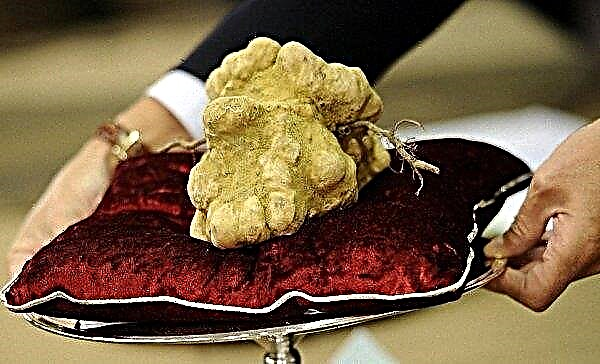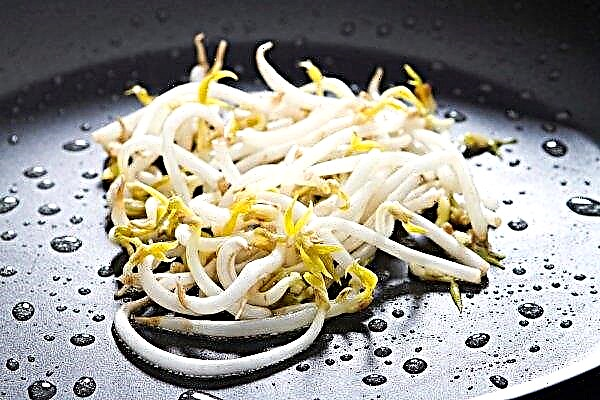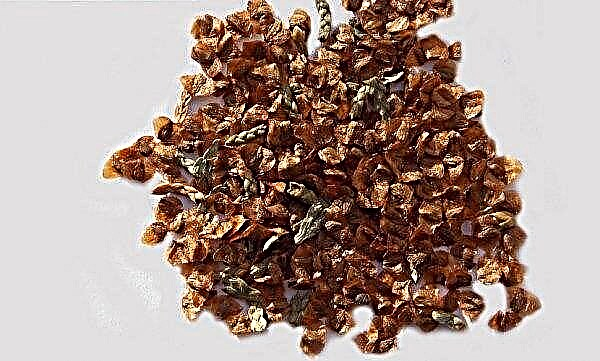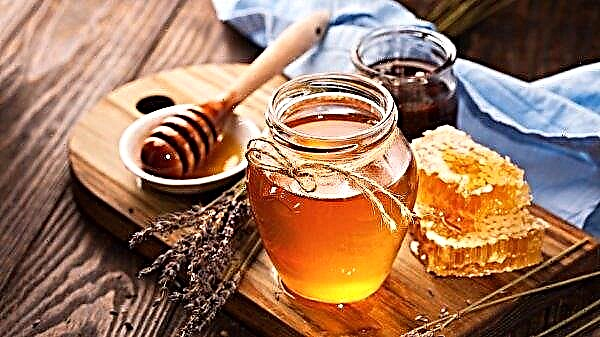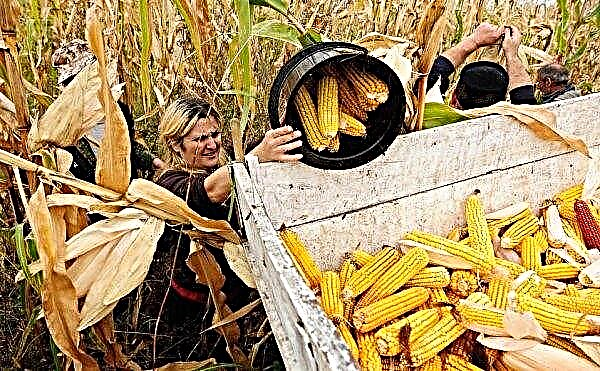Everyone knows that dill is used for pickling cucumbers. And dill water is good for babies. But not everyone knows that the plant can be used much wider. Perhaps, having read the article, you will find the use of dill umbrellas for problems with sleep, digestion and other situations.
What are dill umbrellas
Dill belongs to the umbrella family. Representatives of this family are easily recognizable by inflorescences in the shape of an umbrella. They have small flowers on long legs, an almost invisible calyx and a long stem. Parasols are valued mainly due to the high content of essential oils.
The diameter of the umbrella is about 7 cm, but some reach 15–20 cm. Flowering of the plant begins in June and lasts until the end of summer. Umbrellas in folk medicine are considered a diuretic and antispasmodic. On the territory of our country, greens are often used, and umbrellas - only when canning. But in the Scandinavian countries much attention is paid to the use of umbrellas and seeds.
Did you know? The English name for the spice “dill” comes from the Old Norwegian word “dilla”, which means “to cradle”, therefore the main use of dill in traditional medicine of the Scandinavian countries — soothing.
Beneficial features
To understand how these or other plants are useful, food industry institutes from different countries and pharmacists study their properties. The research results form an accurate picture of the beneficial properties of the plant. Dill owes its uniqueness to the two types of healing components it has: monoterpenes and flavonoids.

- The main useful properties:
- Monoterpene components protect the body from free radicals. And this allows us to consider the plant as a natural "chemical-protective" food that neutralizes carcinogens.
- Volatile oils (flavonoids) can prevent the development of bacteria, which provides antibacterial properties of the spice.
- The plant is a good source of dietary fiber and minerals - manganese, iron and magnesium, which means that it is involved in the metabolic processes of the body.
- Dill contains more than 150% of the daily dose of vitamin A, useful for the eyes, and more than 100% of the daily dose of vitamin C, necessary to support the immune system.
Dill also boasts a significant amount of folate, riboflavin, calcium, vitamin B6, potassium and antioxidants that remove free radicals. All these components are certainly useful and necessary for the functioning of the body.
Important! Not all umbrellas are useful and safe. Hogweed of Sosnowski, poisonous and hemlock is very toxic to humans and animals.
How to collect
An important ingredient in pickles, sauces, salads and fish dishes, fresh dill is available in the markets during the summer and early fall. And if it is dried or closed with salt, then throughout the year. In the food industry, it is used as a seasoning. The cosmetic industry uses oil based on it, and the pharmacopeia uses its medicinal properties.

Harvesting spices on an industrial scale is advisable when about 60% of the fruits ripen (in July). The plant is torn off or cut and bundled for drying. Dry under canopies with natural ventilation. When the raw material dries, the seeds are collected and stored in paper bags. Freshly picked seeds are yellow-green in color, and as they dry, they darken, acquiring a brown hue.
How to save seeds:
- To collect the seeds, you just need to wait until the plant fades.
- Once most of the seeds have formed in the umbrella, crop it and place it upside down in a paper bag.
- Seeds will gradually crumble to the bottom of the bag.
- Then collect them in a sealed glass container.
Did you know? Ancient Greek athletes used dill tonic to improve muscle tone.
Ways to use dill umbrellas
There are a lot of ways to use different parts of the plant. Leaves, seeds, flowers are used in the preparation of fresh dishes, in preparations for the winter, as well as for other purposes.

First of all, it is worth noting its nutritional characteristics. Spice contains only 43 calories and can be used in diet food.
- What helps dill and how to use the plant:
- Soothes the intestines and reduces bloating and flatulence. Its oils stimulate the secretion of bile and digestive juices, which allow you to break down the food you eat into healthy, easily digestible components.
- It also has antibiotic properties, which allows you to destroy alien organisms and promote healing.
- Weak tea made from seeds and water helps babies relieve colic and promotes a peaceful sleep for children.
- Dill also promotes lactation in nursing mothers.
- A tablespoon of seeds contains as much calcium as one third of a glass of milk. This helps protect the body against bone loss, and is also an excellent source of calcium for vegans and people who are allergic to dairy products.
- Its essential oils are quite unusual, as it stimulates and soothes at the same time.
A cup of tea with dill and chamomile will help you relax after a busy day.
In treatment
The benefits of dill were written back in Egyptian medical treatises in 3000 BC. e. They noted its benefit in the fight against indigestion. For the same purpose, dill tea was used at the feasts of the Roman Caesars. Dried seeds were used by ancient soldiers to heal wounds. The psyche was treated with a mixture of dill, oil and honey. He was also considered a remedy for impotence.

In modern medicine, the plant is used to treat indigestion and hiccups. In Ethiopia, dill leaves are chewed with fennel to treat headaches. Dill water will lose its properties after 24 hours, and its further use is no longer advisable - fermentation processes begin in it.
How to use dill, what to make of it and the recommended dosages:
- Dill water Is a boiled mixture of dill and fennel seeds. Half a teaspoon of this room temperature mixture helps the baby with an upset stomach and colic, easing bloating.
- Seed Tea useful for people with indigestion, diarrhea, menstrual cramps, bad breath. To prepare it, you need to soak 2 teaspoons of chopped dill in a cup of boiling water for 10 minutes. Tea from 1 tablespoon of seeds is useful for nursing mothers to enhance lactation.
- Dill seeds can be chewed to refresh your breath.
- Leaves contain a small amount of estrogen and may be beneficial for postmenopausal women. Juice from a fresh plant is beneficial to the urinary system. It also has antifungal and antibacterial properties. Apply 30-50 g per day.
- Dill oil obtained from seeds under industrial conditions. It can be added to food to enhance utility. Creams and ointments based on it can help in the healing of wounds.
Important! Dill does not apply to allergens. But some hypersensitive people may develop a rash when using creams based on it. In this case, stop using the cream.
In cooking
Dill is used in most soups and fish dishes in many countries around the world, including Russia, Sweden, Thailand, Laos, Hungary and Vietnam. This is the main product for pickling pickled cucumbers, as well as delicious herbal breads.
It is added to gravy, sauces and salads to increase the useful qualities of the dish. The cookbooks of any country contain many recipes with dill. But among them we can distinguish common for all methods of application.

What can be done from dill:
- combine greens with low-fat yogurt or sour cream and add fresh cucumbers. It will be a great addition to your dinner;
- use it when cooking fish, especially salmon and trout. The aroma of fish and spices complement each other perfectly;
- decorate them with sandwiches;
- place the seeds on the dining table with other spices so that family members can add them to their dishes;
- when preparing mashed potatoes, add its seeds with greens.
Basic storage methods
Dried greens and seeds are sold in supermarkets or health food stores. They are stored in a tightly closed glass container in a cool, dry and dark place. Do not store spices for more than 6 months - during this time they lose their flavor and some of the beneficial properties.

Fresh twigs should always be stored in the refrigerator. They can be wrapped with paper towel or polyethylene. Also widely used is the storage of plant branches in a jar of water, where the stems are placed like a bouquet. Dill is very fragile, and if stored correctly, you should not do this for more than 1 week. Frozen greens can be stored for about 6 months in an airtight container.
Like any other spice, dill can be used daily. But you should not get too carried away. After all, any product in large quantities can harm the body, so use it in reasonable doses.


